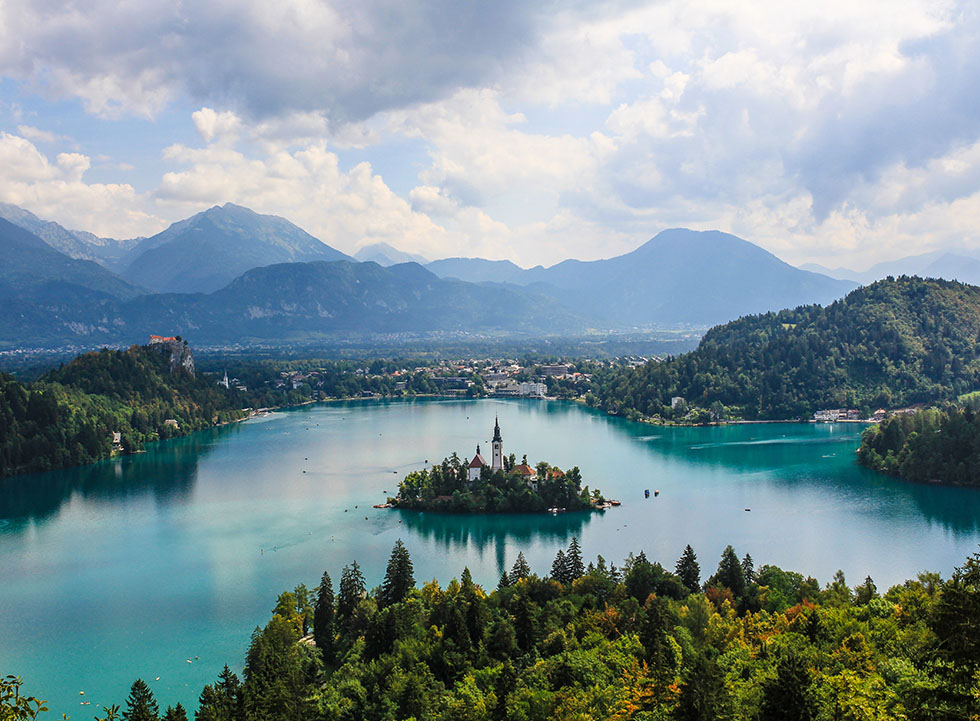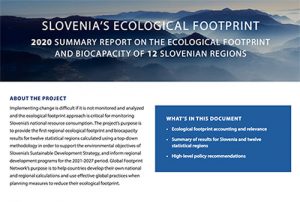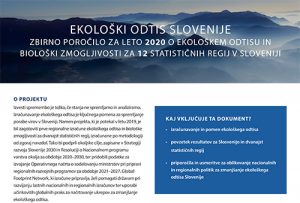Global Footprint Network worked with the Environmental Agency of the Republic of Slovenia and the Republic of Slovenia Ministry for Environment and Spatial Planning to provide the first regional Ecological Footprint and biocapacity results for twelve statistical regions in Slovenia. The project was completed in order to support the environmental objectives of Slovenia’s Sustainable Development Strategy, and to inform regional development programs for the 2021-2027 period.
Key findings from the project include:
- After the 2008 financial crisis, the Ecological Footprint of Slovenia decreased to its lowest point in 2013 and has since increased 5.7%, largely driven by increases in the carbon Footprint and forest products Footprint.
- Per capita Ecological Footprints do not vary widely between regions.
Although this is common in many countries, additional analysis is recommended.
- The southern regions of Jugovzhodna Slovenija and Primorsko-notranjska are proportionally the richest in forest biocapacity and have the highest biocapacity per hectare.
- Pomurska and Podravska in the north, by contrast, have higher proportions of croplands and the lowest biocapacity per hectare.
- Three categories of household consumption make up three quarters of household consumption for all regions:
-
- transportation (25-26%)
- housing, water, electricity, gas and other fuels (26-27%)
- food and non-alcoholic beverages (21-23%)
Global Footprint Network made the following four policy recommendations:
- Energy-efficient urban planning, including net-zero buildings. Housing and personal transportation are the two largest Ecological Footprint categories in Slovenian regions. Identifying population centers and areas of rapid development will be particularly important in setting the stage for Slovenia’s success in 2030. Careful infrastructure planning that reduces energy demand in everyday life, from urban planning to net-zero buildings is a key component of resilient, resource-efficient Slovenia. This is a priority for regions with the largest transportation and housing footprints such as Koroska, Osrednjeslovenska, and Obalno-kraska.
- Transition to low-carbon renewable energy systems. Stable and predictable energy systems are key to resilience. By 2050, we expect to live in a world free of fossil fuel. Energy policy must be forward-looking to avoid the trap of stranded assets associated with industrial, fossil-fuel based economies and seek renewable energy solutions. The sooner regions adapt to this frame of thinking, the more prepared we will be for the future.
- Prioritize forest management to preserve biocapacity. Slovenian forests are a vital natural asset. From a biocapacity perspective, over 75% of Slovenia’s biocapacity comes from forest, and from a footprint perspective, per-capita consumption of forest products is among the 10 highest in the world. From a biocapacity perspective, over 75% of Slovenia’s biocapacity comes from forest, and from a footprint perspective, per-capita consumption of forest products is among the 10 highest in the world.
- Prioritize regenerative agriculture to enhance cropland biocapacity. In the northern regions where cropland is primarily located, regenerative practices will improve the biocapacity of the land. This will be a critical need in the future when biocapacity becomes more limited and the cost of natural resources goes up.
Slovenia is among more than a dozen countries which have used the Ecological Footprint to help guide environmental policy. Other countries include Ecuador, Japan, the Philippines, Switzerland, and the United Arab Emirates.
Additional Resources:
Press Release: Slovenia Ministry of the Environment and Global Footprint Network outline use of Footprint for environmental and development strategies
Blog Post: The Ecological Footprint is a fair metric for Slovenia to achieve its climate goals.





